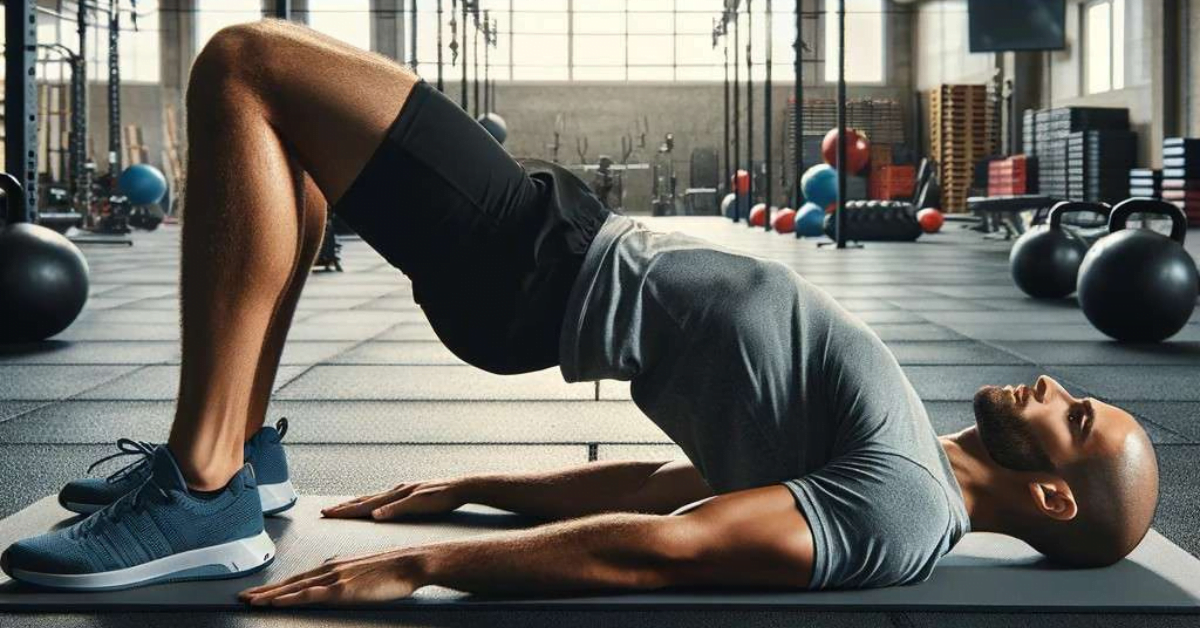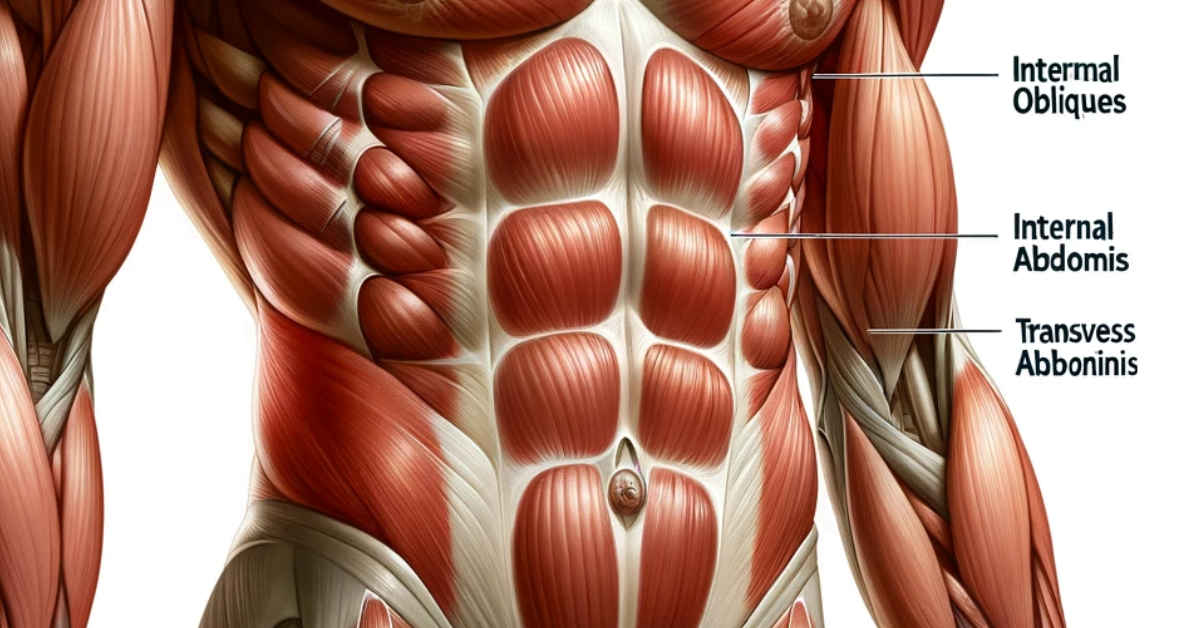
Does the nightmare of a flat booty and loose jeans haunt you with each passing glance in the nearest reflective glass, aka mirror?
As a hard-gainer, I know the feels all too well.
So how do you wake up from this reality?
Well, you can start by waking up your gluteus maximus with simple, bodyweight-only glute bridges.
A minimalist, floor-based exercise, glute bridges are a hip extension variation perfect for beginners learning how to train their posteriors while enhancing mind-muscle connection.
But floor bridges can also be modified to challenge intermediate and advanced exercisers.
Not to mention, you don’t need to bother with balance, or taxing your body as glute bridges are lower-stress.
Let me guide you to a better derrière with this absolute gem of a home (And gym) butt exercise that anyone can, and should do!

While several muscles turn on during glute bridges, let's start with the most important one.
A round, luscious, and aesthetic rear-end also goes by the name gluteus maximus.
While there are two other butt muscles (Gluteus medius and minimus), the glute max is both the largest and strongest.
Fun fact: Gluteus maximus is also considered the largest muscle in the human physique!
The gluteus maximus teams up with the hamstring muscles to extend the thigh at your hip, and create a straight line from head to knees.
E.g., going from sitting to standing, popping up out of a squat, or lifting the hips during the glute bridge.
You must do dedicated glute training to build this muscle to its full potential.
If you look right under your bun cheeks you’ll find the hamstring muscles on the rear upper leg opposite the anterior-facing quadriceps.
Hamstrings are known to function by three heads that cross the hips and knee joints.
Like the gluteus maximus and addition to it, the hamstrings extend the thigh but also flex the knee.
Also used to improve core capability, glute bridges are an easy way to safeguard your abdominal and lower back core muscles.
You can never do too much for your midsection as it provides a base of support for all activities.

Even experienced exercisers can benefit from muscle overloading using the simple glute bridge.
Whether you’re utilizing the most basic technique, or opting for a more challenging modified version.
The glute bridge offers unique advantages that you won’t find with other butt movements.
Being such a novice-friendly variation, many underestimate how effective glute bridges are for building strength and muscle.
Proper technique will allow you to realize its potential, and that’s when you’ll see more powerful, better-looking glutes.
Start by aiming for as many reps as possible.
If you can achieve more than 25 good reps, it’s time to level up with one of the more advanced variations included below.
Glute bridges strengthen the abdominals remove during the bridge portion, promoting stability and core support during other activities.
A stronger core also translates to a stronger lower back and less pain.
However, weak glutes also contribute to lower back pain by throwing off your gait, or your walking form.
So you’re giving your lower back a double dose of lower back protection with glute bridges.
Without realizing it, our bodies develop horrendous posture over time between our sitting habits, tech neck (Aka forward head posture), lack of activity, and the list goes on.
If your glutes are sleeping all the time, and get little exercise, it's going to have negative effects on your posture and performance.
You may not see it when you’re young, but the body will endure so much before it stops cooperating.
The key to training your glutes for better posture and functional benefits is to fully extend your hips during each rep. Stopping short keeps the thighs flexed, and that’s a bad habit.
If you want the best bang for your butt, you’ll need to understand proper glute bridge, and hence hip extension technique.
Below I’ve detailed the correct glute bridge form and execution in just a few short steps, followed by a brief video demonstration.
Step 1: Find a clean, non-slippery area of a floor, and place an exercise mat down if you need more comfort during the glute bridge.
Step 2: Lie on your back with your knees bent, feet flat on the floor roughly hip-width apart, and ankles directly under the knees. Relax both arms down on the floor by your sides with palms facing up or down.
Step 3: Press your lower back flat against the floor to ensure optimal core involvement.
Step 4: Now squeeze your butt muscles hard, keep your core engaged, then lift your hips toward the ceiling until they're fully extended. Keep your head back on the floor, and not tucked toward the chest, to keep your airways open.
Step 5: Gently drop your butt down to the floor and make contact with your lower back to ensure the core remains properly engaged.
Repeat steps 4 and 5 for the optimal number of repetitions. That’s all there is to it!
Check out the following video demonstration of proper glute bridge technique, and learn a more advanced technique at the end.
Addressing your bad habits now will ensure you get the gains you want, and prevent lower back pain later on. Here are common mistakes to avoid during the glute bridge.
You don’t want either extreme with the heels being too close or far away from your butt.
Instead, ensure both feet are planted firmly on the floor in a neutral spot that allows you to get optimal leg drive, and butt activation, without straining your knees.
A big one, you need to be consciously squeezing your glutes to achieve optimal hip extension and to get all the benefits from this variation.
And that goes for all lower-body movements like squats, deadlifts, hip thrusts, etc.
You don’t need to hyperextend your lower back either.
While the hips are capable of roughly 15-degree extension behind your body, you only need to straighten your thighs to a neutral position.
Avoid pushing your head forward and tucking your chin toward your chest as this can restrict your airway, and reduce efficiency.
Instead, keep your head back and let the chest open up during this hip raise movement.
We took the most important glute bridge training tips and listed them below for your convenience.

If you’re beyond novice level, these next variations are what you should be doing.
While we cannot say one is harder than the other (Depends on several factors), try them and see which ones challenge you appropriately.
But make sure to have good form, and stop if you feel pain or discomfort.
Did you know your body has a built-in resistance system?
How so?
Well, you can take most two-legged leg exercises, and simply do them on one leg.
This significantly increases the training load and should be a regular go-tp method when it comes to bodyweight training.
Plus it infuses a little hip instability which is good for you to experience for functional benefits.
To do the single-leg glute bridge, simply leave one foot on the floor, and extend the other one straight out in front of you or lift your leg straight up vertically toward the ceiling (Knee can be slightly bent).
Push through one foot into full hip extension. Make sure to perform an equal number of reps on each side.
Another variation I really like is a feet-elevated glute bridge, where you prop your feet up onto a short table, box, stool, furniture, etc.
This modification also allows you to extend your non-working leg more vertically, in turn increasing the level of difficulty.
Typically performed lying on the floor using a loaded barbell that can roll over your hips, the weighted glute bridge is a progression before full-throttle weighted hip thrusts.
You can load them with lots of weight so long as you can achieve full hip extension.
A dumbbell or any other weight that can provide symmetrical resistance will also work just fine.
But just make sure you can still fully extend the hips, otherwise, your lower back may compensate for your lack of hip strength. If this happens, lighten the load.
The creme de la creme of butt-building exercises.
Unlike squats and similar spine-loaded movements, hip thrusts hold the weight right on the hip crease.
Both reducing vertebral stress and allowing better glute precision and stimulus.
“The Glute Guy” Bret Contreras, PHD, CSCS, and arguably the GOAT of butt science is a major proponent of hip thrusts for glute development.
In fact, he’s dedicated decades of research to achieving a world-class backside and sharing his knowledge.
So yeah, this exercise is no joke.
In the weighted hip thrust, your upper posterior is supported at an upright angle against a bench, significantly enhancing your body’s ability to thrust heavier loads using a larger range of motion.
So if you’re advanced in your glute training, this one is non-negotiable!
While it’s not a glute bride per se, step-ups do something similar and they’re also a way to make bodyweight glute training more challenging, and effective.
Moreover, they’re typically less intimidating than other compound leg movements like squats, and can be more knee-friendly.
By stepping up onto a platform like a bench or chair, the glutes work harder to get the thighs into extension.
Pro tip: Make sure your ceiling is high enough or you may bump your head.

Whether you train at home with limited equipment, need a glute day warmup, or need something to exhaust your toosh at the end of a brutal posterior workout, glute bridges can fit in perfectly.
It just depends on why you're utilizing them, your goals, and your overall workout regime.
For bodyweight-only training, do the basic, and modified equipment-free variations included below.
If you like easy warmups, start with glute bridges to drive blood in your lower body before a weight lifting session, or knock out a glute bridge workout while relaxing on the floor.
Yeah, they’re that accessible!
Nutrition is more than just protein.
You also need to consume enough carbs and fats to fuel your glute bridge training, while staying properly hydrated for accurate strength performance.
Good workout carbs include sweet potatoes, rice, and oats, while nuts, and quality eggs, animal meats, and some dairy products offer good fats and protein.
I also strongly recommend a quality whey protein for its fasting-acting effects on muscle tissue.
Having a quality protein shake right after training has been shown to have immediate effects on the muscle repair and growth process (1).
Check out our favorite protein powder picks in a variety of categories here.
While this guide focuses on the glute bridge exercise, equally important are the five most basic recovery habits to ensure you realize optimal gains.
Must-have recovery habits:
The first three habits build and repair your muscles to create strength and aesthetics while stretching and light activity keep your muscles elastic, functional, and injury-free.
Then, depending on your level of commitment, you can introduce techniques like foam rolling that help relax tight muscles.
This, in turn, helps with performance and other muscle-related functions.
All of these good habits combined will make you an unstoppable force.

In this section, you'll find our answers to some common questions and concerns about the glute bridge.
Are glute bridges a woman’s exercise?
Should men do them too?
While it may have been this way many moons ago, we hope no one thinks of any good resistance movement as being just for men or women.
Especially with an exercise as good as a glute bridge, there’s nothing girly about it.
Some of the advanced bodyweight glute bridge variations like single leg, feet elevated, weighted glute bridges, and step-ups can challenge the toughest gym-goers.
Will glute bridges make my butt bigger?
They absolutely can, butt… they need to be consistently challenging via progressive overload, by including more reps and more resistance, or swapping the variation to a harder one.
Who should not do glute bridges?
While they can help at the same time, glute bridges may not be ideal for people with back, knee, or ankle problems.
Especially if you perform the movement incorrectly.
What more can we say about such a fannytastic butt-focused exercise?
With distinct and obvious advantages over its competition, the glute bridge s a no-brainer.
It’s a fully balanced, lying glute movement that can be progressed into harder variations while remaining in the same pose.
No one is exempt from the limitless benefits of glute bridges, and especially the ultimate goal, weighted hip thrusts, which possess the power to endless rump gains!
Useful Links
 About FitFrek
About FitFrekFitFrek operates as an independent platform, offering comprehensive workouts, programs, routines, guides, and unbiased reviews to accelerate your progress. We pride ourselves on our honesty, delivering straightforward and candid insights. FitFrek does not offer medical advice, diagnosis, or treatment services.